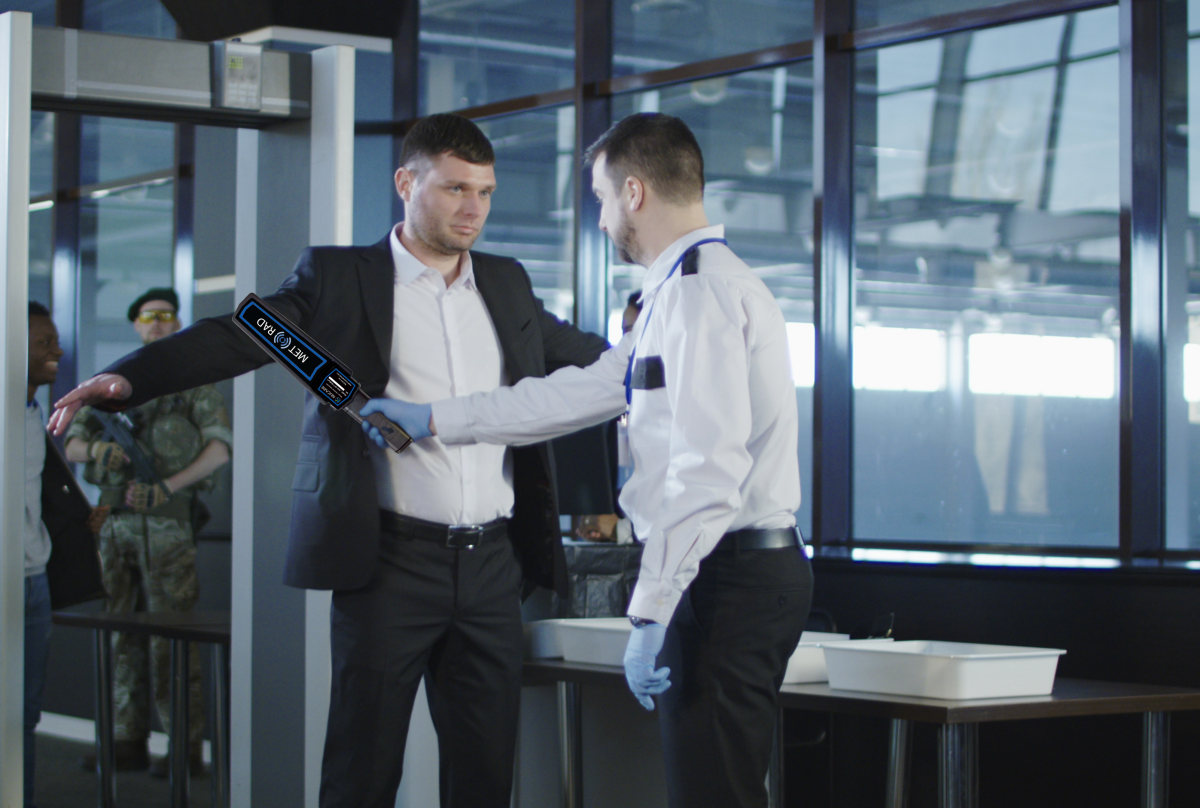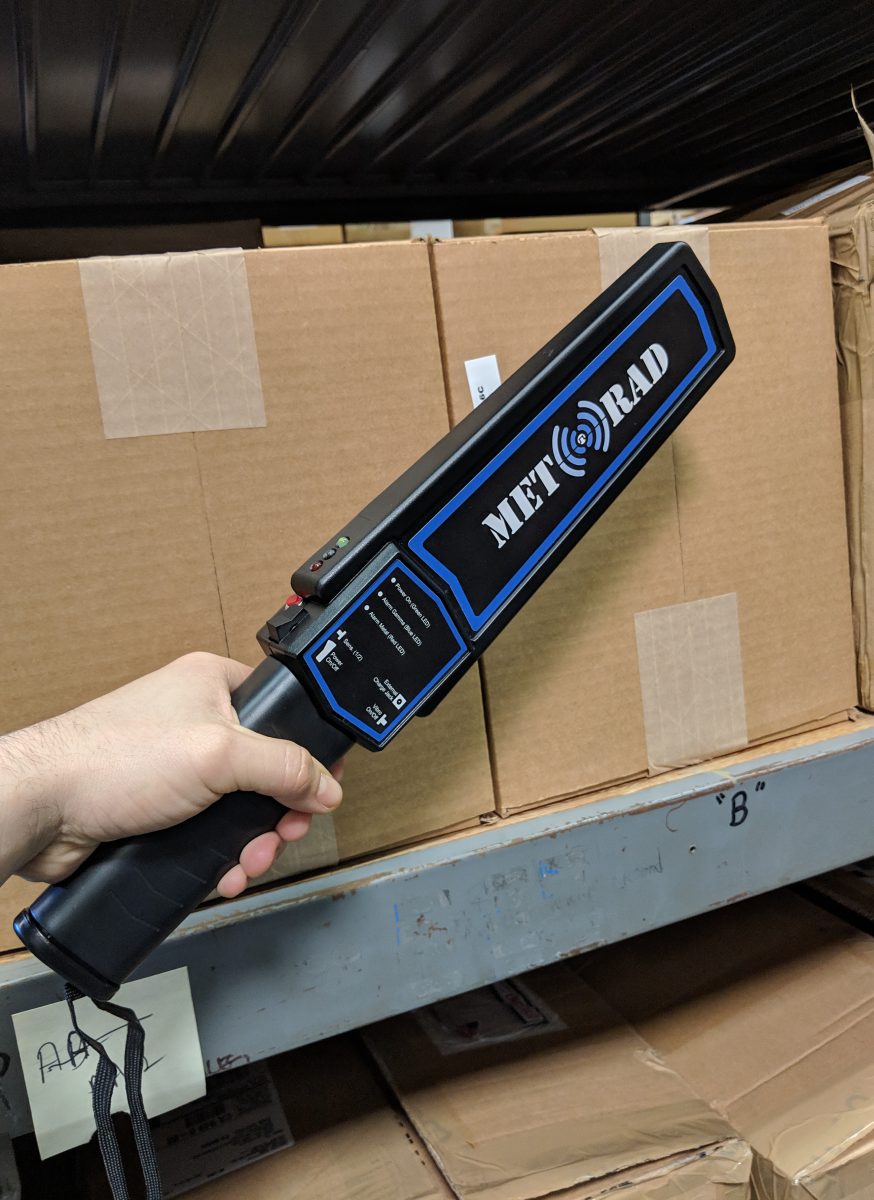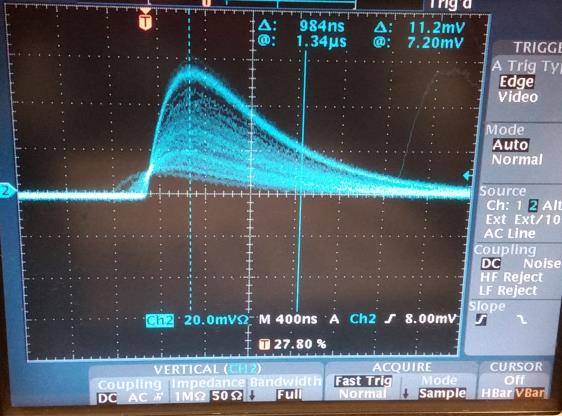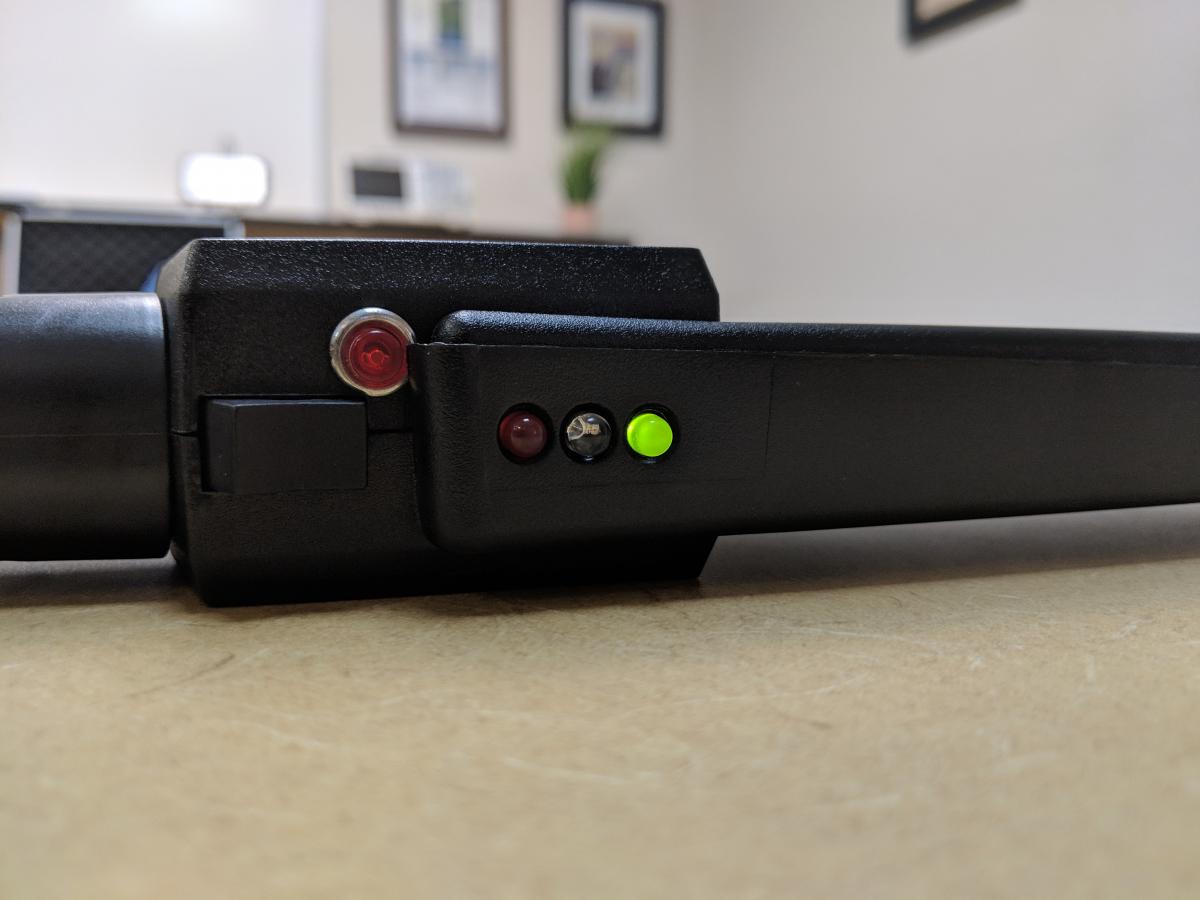April 22nd, 2019 - A Unique Handheld Metal and Radiation Detector
Instrumentation with the simplicity of operation is one of the chief objectives for an effective first-line response. This achievement is realized in a unique manner with the multifunctional MetRad 1. This accomplishment is even more significant with the ability to simultaneously detect metal and gamma radiation without the need of switching modes.
Instrumentation with simplicity of operation is one of the chief objectives for effective first-line response. This achievement is realized in a unique manner with the multifunctional MetRad 1. This accomplishment is even more significant with the ability to simultaneously detect metal and gamma radiation without the need of switching modes. Furthermore, alarm indications of radioactive material and metal are automatically presented visually in different colors, achieving an effective and simplistic technique for detection of metal, radiation or both. The MetRad 1 is capable of detecting many metals including iron, nickel, copper, brass, bronze, lead, aluminum, tin, gold and silver.
Security Operations
A single scan of baggage or personnel allows both metals (e.g., hand guns or knives) and radioactive materials to be effectively screened thus saving time and improving overall security operations. The MetRad 1 is convenient for long term use because of its small size (16.5 inches long), light weight (<1 lb.), ease of use and ruggedized design. The audio alarm may be switched to vibrate when in an area where the audible alarm can be disturbing to others or operations are of a covert nature. Don’t underestimate the importance of gun surveillance and detection. In US airports alone the number of guns carried through security is estimated to exceed 4000 this year with about 93% loaded.

Applications
Security operations for the MetRad 1 include: Customs, transportation security, police services, security in airports, building security, military, hospitals, and public events. All these applications include the detection of weapons and radioactive materials.
Another application that may not include security, but is one of importance pertains to the detection of metal objects in buildings and construction sites. In many instances, it is essential to find the exact location of metal. For example, rebar in concrete, location of pipes, electrical cables, etc., which may be hidden in walls and floors.

MetRad 1: Handheld Metal and Gamma Radiation Detector
Gamma-Ray Detection
The MetRad 1 gamma sensor is a large cesium iodide (CsI) scintillator coupled to a silicon photomultiplier (SiPM) which results in excellent sensitivity to shielded sources. The CsI scintillator is doped to achieve a high emission of light at the most efficient wavelength when coupled to a SiPM. This is accomplished by doping with thallium and therefore commonly designated as CsI(Tl). CsI(Tl) is one of the brightest scintillators known, producing a high photon output (54 photons/keV). When the CsI(Tl) scintillator is coupled to a SiPM the light, representing the gamma-ray energy, is amplified with gains as high as 106. The resulting light (called scintillation) produces an electrical pulse at the output of the SiPM which will activate the selected alarm mode (colored lights, audible sound or vibration).
Electrical pulse at the output of the SiPM
These mechanically compact components of the radiation detector take up a small amount of space in the streamlined package of the MetRad 1. Furthermore, the CsI(Tl)-SiPM can be powered at a low voltage (typically 5-10 volts).

Metal Detection
The metal locator circuitry is compact but uses the latest techniques for sensitive metal detection.
The metal detector contains a coil of wire known as the transmitter coil. When electricity flows through the coil, an electro-magnetic field (EM field) is created all around it. As you move the detector the EM field moves as well. However, if you move the detector over a metal object, the moving EM field affects the atoms inside the metal by changing the way the electrons move. If there is a changing magnetic field in the metal, there must also be an electric current moving as well. When electricity is moving in a piece of metal, it in turn, must induce an EM field. Therefore, when you move a metal detector over a piece of metal, the EM field coming from the detector causes another EM field to appear around the metal. It's this second magnetic field, around the metal, that the detector picks up. The metal detector has a second coil of wire (known as the receiver coil) that's connected to a circuit containing an alarm devise (sound, vibration or light). As you move the detector over the piece of metal, the magnetic field, produced by the metal, passes through the coil. This causes an electric current to flow through the receiver coil, activating the alarm. The closer you move the transmitter coil to the piece of metal, the stronger the EM field the transmitter coil creates and therefore, the stronger the EM field the metal creates in the receiver coil. This produces increased current to flow in the alarm circuitry, intensifying the alarm.

Specifications
The CsI(Tl) scintillator is well-suited for portable instrumentation. It has very good mechanical properties making it ideal where severe shock conditions are encountered. The CsI(Tl) coupled to a SiPM results in a very compact module and is sensitive to very low energy radiation (e.g., americium-241 at 60 keV)as well as high energy (e.g., cobalt-60 at 1250 keV). The SiPM is also insensitive to magnetic fields making it an excellent choice when packaged with a metal detector.
Even though the instrument has the sensitivity typically used for homeland security it can be operated around X-Ray scanners without the concern of false alarms. An auto-adjust button is provided for the proper background level when used in an X-Ray environment. Rechargeable or off-the-shelf batteries are another feature for convenient long term operation with up to 500 hours of active use. Operations in adverse conditions such as rain (Ingress Protection is IP65) and broad temperature range (-20oC to +50oC) is all part of the ruggedized and dependable operation. The detection sensitivity of metal and radioactive material can be maximized by passing the MetRad 1 close to the object being scanned. However, handguns can still be detected at a distance of 20 cm with a scanning speed of 10 to 50 centimeters per second.
James McQuaid specializes in nuclear spectroscopy instrumentation. He is a former manager of Nuclear Chemistry Engineering at Lawrence Livermore National Lab and presently a consultant for Berkeley Nucleonics Corp. James holds two U.S. patents in the area of homeland security and nuclear medicine.
